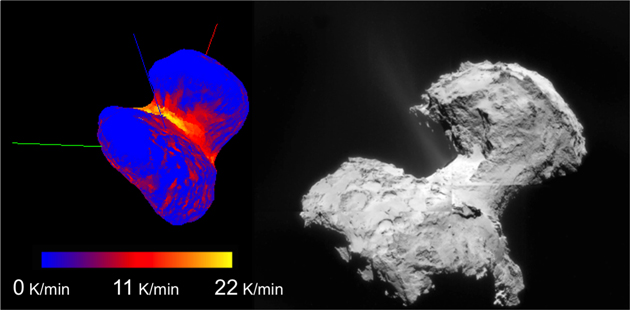The so-called "early activity" of comet 67P/Churyumov–Gerasimenko has been observed to originate mostly in parts of the concave region or "neck" between its two lobes. Since activity is driven by the sublimation of volatiles, this is a puzzling result because this area is less exposed to the Sun and is therefore expected to be cooler on average. We used a thermophysical model that takes into account thermal inertia, global self-heating, and shadowing, to compute surface temperatures of the comet. We found that, for every rotation in the 2014 August–December period, some parts of the neck region undergo the fastest temperature variations of the comet’s surface precisely because they are shadowed by their surrounding terrains. Our work suggests that these fast temperature changes are correlated to the early activity of the comet, and we put forward the hypothesis that erosion related to thermal cracking is operating at a high rate on the neck region due to these rapid temperature variations. This may explain why the neck contains some ice—as opposed to most other parts of the surface—and why it is the main source of the comet’s early activity. In a broader context, these results indicate that thermal cracking can operate faster on atmosphereless bodies with significant concavities than implied by currently available estimates.

(image credit ESA/Rosetta/Navcam/Bob King).
V. Alí-Lagoa (Post-doctorant, OCA/Lagrange), M. Delbo (Chargé de recherche au CNRS, OCA/Lagrange), and G. Libourel (Professeur à l’Université de la Côte d’Azur, OCA/Lagrange).
Published 2015 September 10 • © 2015. The American Astronomical Society. All rights reserved. The Astrophysical Journal Letters, Volume 810, Number 2.


